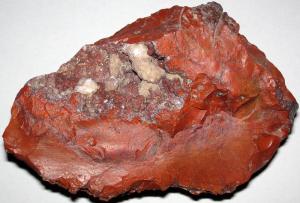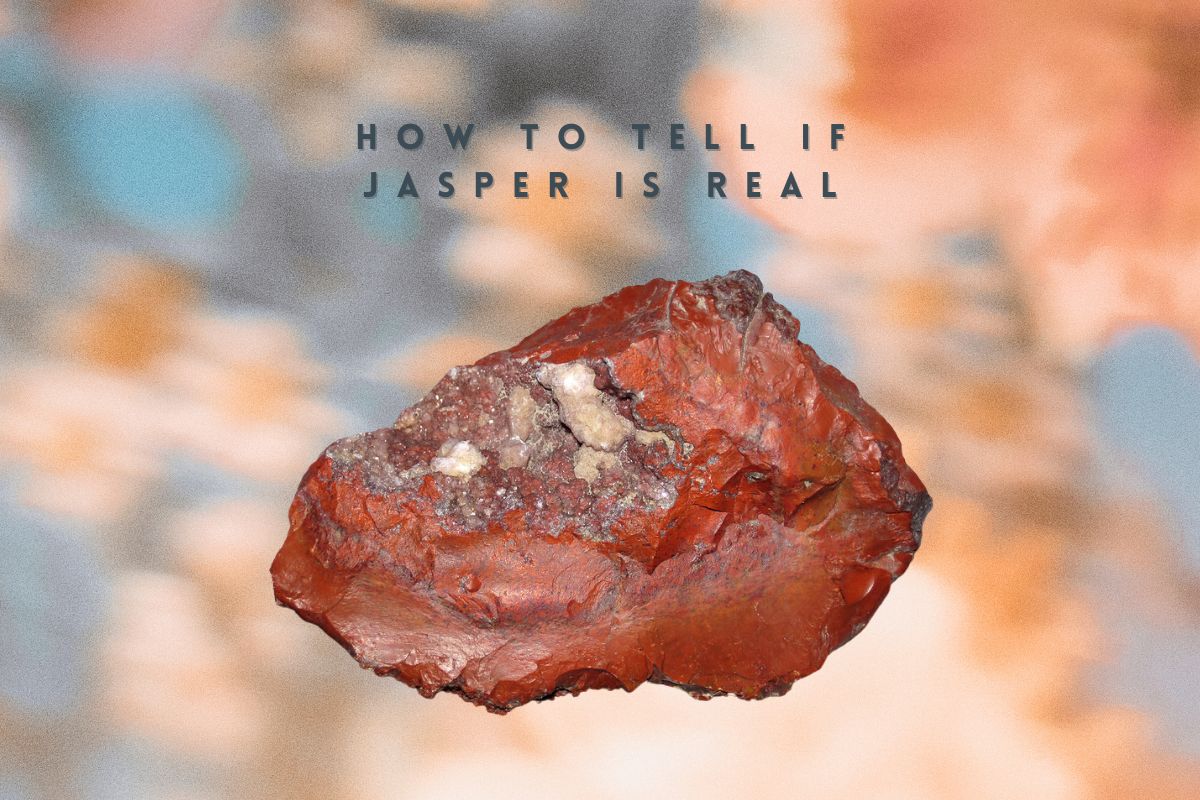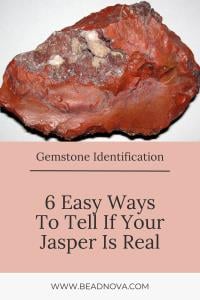Jasper, a beautiful and versatile gemstone, has gained popularity in recent years due to its unique patterns, colors, and metaphysical properties. With its increasing demand, it’s crucial for enthusiasts and collectors to know how to tell if jasper is real. This comprehensive guide will provide valuable insights into distinguishing real vs fake jasper and help you make informed decisions when purchasing this captivating gemstone.

photo by James St. John
Table of Contents
A Comprehensive Guide on Identifying Fake Jasper
Real vs Fake Jasper
1. Examine the Color and Patterns
One of the first steps in determining the authenticity of jasper is to inspect its color and patterns. Genuine jasper comes in a wide range of colors, including red, green, yellow, brown, and blue. The colors are usually derived from the minerals present during the stone’s formation. Jasper often exhibits unique patterns and banding, which are the result of its sedimentary nature.
Fake jasper may have overly uniform, artificial-looking colors and patterns. The lack of natural variation or inconsistencies could be a red flag. If the color appears too vibrant or seems painted on, it’s essential to investigate further.
2. Check the Texture and Surface
The texture and surface of a jasper stone can reveal valuable information about its authenticity. Genuine jasper typically has a smooth, polished surface with a matte or semi-glossy finish. It may also have minor natural imperfections, such as small pits or fissures, that add character to the stone.
If the surface appears overly glossy or unnaturally perfect, it could be an indicator of fake jasper. Synthetic stones or dyed imitations may have an unnatural shine, which may be a telltale sign of inauthenticity. Always pay close attention to the texture and surface when examining jasper.
3. Perform a Hardness Test
One way to determine real vs fake jasper is by conducting a simple hardness test. Jasper is a relatively hard gemstone, ranking between 6.5 and 7 on the Mohs scale of mineral hardness. A scratch test can be performed using a sharp object, such as a steel nail or a piece of quartz.
Gently scratch the jasper’s surface with the chosen object. If the stone is easily scratched or shows significant damage, it may not be genuine jasper. Keep in mind that this test can cause slight damage to the stone, so it’s best to perform it on a discreet area or on a loose piece of jasper.
4. Test the Specific Gravity
Specific gravity is a measure of a stone’s density, and it can provide valuable information about the authenticity of jasper. The specific gravity of jasper typically ranges from 2.5 to 2.9, depending on its mineral composition.
To conduct a specific gravity test at home, you’ll need a digital scale, a container of water, and a thin string or wire. First, weigh the jasper stone in grams (g) while it’s dry. Next, suspend the stone in the water using the string or wire and weigh it again. Divide the dry weight by the difference between the dry weight and the weight when suspended in water to find the specific gravity.
If the calculated specific gravity falls within the expected range for jasper, it increases the likelihood that the stone is genuine. If the value is significantly different, it could indicate fake jasper.
5. Inspect the Stone Under UV Light
Some types of jasper may exhibit unique reactions or fluorescence under ultraviolet (UV) light. While not all jasper varieties will display this characteristic, it can be a helpful tool for identifying certain types of jasper.
To perform a UV light test, place the stone under a UV lamp or use a portable UV flashlight. Observe any changes in color or the appearance of patterns that were not visible under normal lighting conditions. Be aware that some fake jasper may also fluoresce under UV light, so this test should be used in conjunction with other methods.
6. Consult a Gemologist or Reputable Dealer
While the techniques outlined above can help you learn how to tell if jasper is real, consulting a professional gemologist or a reputable dealer is often the most reliable way to confirm the stone’s authenticity. Gemologists possess the expertise, equipment, and experience needed to accurately identify gemstones.
If you’re unsure about the authenticity of your jasper, seeking professional advice can provide peace of mind and ensure you’re investing in genuine jasper.
Bonus: Beware of Common Jasper Imitations and Misrepresentations
In addition to the six easy ways discussed, it’s crucial to be aware of common jasper imitations and misrepresentations on the market. Here are some examples to help you stay informed and avoid purchasing fake jasper.
- Dyed Agate and Chalcedony
Some sellers may try to pass off dyed agate or chalcedony as jasper. Agate and chalcedony are closely related to jasper, but they have subtle differences in terms of patterns and translucency. When these stones are dyed, they can closely resemble certain types of jasper. Be cautious when you come across stones with vivid, unnatural colors, as they may be dyed imitations.
- Synthetic Jasper
Advancements in technology have made it possible to create synthetic jasper that closely mimics the appearance of natural jasper. Synthetic jasper is created in laboratories, and while it may have a similar chemical composition, it lacks the natural formation process and unique characteristics of genuine jasper. To identify synthetic jasper, look for overly uniform patterns, uncharacteristic inclusions, or unusually perfect surfaces.
- Misrepresented Varieties
Another issue to be aware of is the misrepresentation of jasper varieties. Some sellers may try to sell lower-value jasper as more expensive or rarer varieties. Familiarize yourself with the specific characteristics of the jasper type you’re interested in, and don’t be afraid to ask the seller questions or request additional information to ensure you’re getting the real deal.
By staying informed about common jasper imitations and misrepresentations, you’ll be better prepared to spot fake jasper and make educated decisions when purchasing this beautiful gemstone. Knowledge is power, and in the world of gemstones, a well-informed buyer is less likely to fall victim to scams or dishonest sellers.
Conclusion
By following these six easy ways to tell if your jasper is real, you can feel confident in your ability to distinguish real vs fake jasper. Keep in mind that no single method is foolproof, so it’s always best to use a combination of these techniques to increase your chances of accurately identifying genuine jasper. Be vigilant when purchasing jasper, and remember to buy from reputable sources to minimize the risk of acquiring fake jasper.
In conclusion, understanding how to tell if jasper is real is an essential skill for gemstone enthusiasts and collectors. By investing time in learning these methods and seeking expert advice when needed, you’ll be well-equipped to make informed decisions when it comes to buying and appreciating this captivating gemstone.
More articles about gemstones you like:
The Ultimate Guide To Using Healing Crystal For Beginners
5 Easy Ways on How to Tell if Amethyst is Real or Fake
7 Ways On How to Tell If Your Clear Quartz Is Real or Fake
6 Ways to Tell If Your Rose Quartz Is Real
How To Tell If The Turquoise Is Real?
Yellow Jasper: Meaning, Healing Properties, and Uses
Picture Jasper Meaning and Healing Properties
Bumblebee Jasper: Meaning, Healing Properties, Benefits, and Uses
Red Jasper: Meaning, Healing Properties, and Uses





Leave A Comment